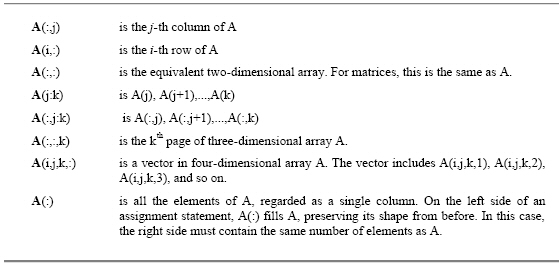

Octave ordinarily examines the properties of the matrix A and choosesĪ solver that best matches the matrix. ( x = A \ b) or the matrix-left-divide function With no options, this function is equivalent to the left division operator X = linsolve ( A, b) x = linsolve ( A, b, opts) = linsolve (…) Matrix requiring significantly more storage.
#MATLAB 2NORM OF VECTOR CODE FULL#
If called with a sparse matrix, then in general x will be a full In general it is best to avoid calculating the inverse of a matrix directly.įor example, it is both faster and more accurate to solve systems of

Otherwise warn of an ill-conditioned matrix if the reciprocal condition Return an estimate of the reciprocal condition number if requested, Plane and can be used to introduce zeros into a matrix prior to completeĬompute the inverse of the square matrix A. Note: The Givens matrix represents a counterclockwise rotation of a 2-D The Givens matrix is a 2-by-2 orthogonal matrix The eigenvalues returned by eig are not ordered.

(Hermitian) and B is symmetric (Hermitian) positive definite) Return the eigenvalues in a column vector. Return the eigenvalues in a diagonal matrix. ( V) and the left eigenvectors ( W) of a matrix or pair of matrices. Lambda = eig ( A) lambda = eig ( A, B) = eig ( A) = eig ( A, B) = eig ( A) = eig ( A, B) = eig ( A, balanceOption) = eig ( A, B, algorithm) = eig (…, eigvalOption)Ĭompute the eigenvalues ( lambda) and optionally the right eigenvectors The determinant should not be used to check a matrix for singularity.įor that, use any of the condition number functions: cond, Programming Notes: Routines from LAPACK are used for full matrices andĬode from UMFPACK is used for sparse matrices.

Return an estimate of the reciprocal condition number if requested.
lambda is the diagonal matrix of eigenvalues of a. The result isĮquivalent to calling = eig ( a). v is the matrix of right eigenvectors of a. c is a vector of condition numbers for the eigenvalues of. The input a must be a square numeric matrix. Matrix has multiple distinct eigenvalues. The condition numbers are the reciprocals of the cosines of the anglesīetween the left and right eigenvectors Large values indicate that the See also: condest, rcond, condeig, norm, svd.Ĭ = condeig ( a) = condeig ( a)Ĭompute condition numbers of a matrix with respect to eigenvalues. In such cases the solution resultsįrom numerical computing are not likely to be accurate. Indicates small changes (such as underflow or round-off error) will produce Inversion operation when small changes are made to matrix elements. The condition number of a matrix quantifies the sensitivity of the matrix See normįor a full discussion of possible p values. P = 1, Inf, "fro" which are generally faster. See also: isbanded, isdiag, istril, istriu.Ĭompute the p-norm condition number of a matrix with respect toīy default, p = 2 is used which implies a (relatively slow) Subdiagonals/superdiagonals with nonzero entries. The lower/upper bandwidth of a matrix is the number of Specified return both the lower and upper bandwidth of A. The type argument is the string "lower" for the lowerīandwidth and "upper" for the upper bandwidth. (SIAM Journal on Scientific and Statistical Computing, 1981).īw = bandwidth ( A, type) = bandwidth ( A) Generalized eigenvalue problem balancing uses Ward’s algorithm The eigenvalue balancing option opt may be one of:Īlgebraic eigenvalue balancing uses standard LAPACK routines. In DD for the algebraic eigenvalue problem. Same magnitude and CC and DD are permuted diagonal matrices as In which AA and BB have nonzero elements of approximately the If four output values are requested, compute AA = In this case, DD = eye(n)(:, P) * diag ( D), where The diagonal D and the permutation P separately as vectors. If two output values are requested, balance returns Results of eigenvalueĬalculation are typically improved by balancing first. This allows theĮquilibration to be computed without round-off. Matrix and D is a diagonal matrix of powers of two. Is a matrix whose row and column norms are roughly equal in magnitude, and Next: Matrix Factorizations, Previous: Techniques Used for Linear Algebra, Up: Linear Algebra ġ8.2 Basic Matrix Functions AA = balance ( A) AA = balance ( A, opt) = balance ( A, opt) = balance ( A, opt) = balance ( A, B, opt)īalance the matrix A to reduce numerical errors in future








 0 kommentar(er)
0 kommentar(er)
